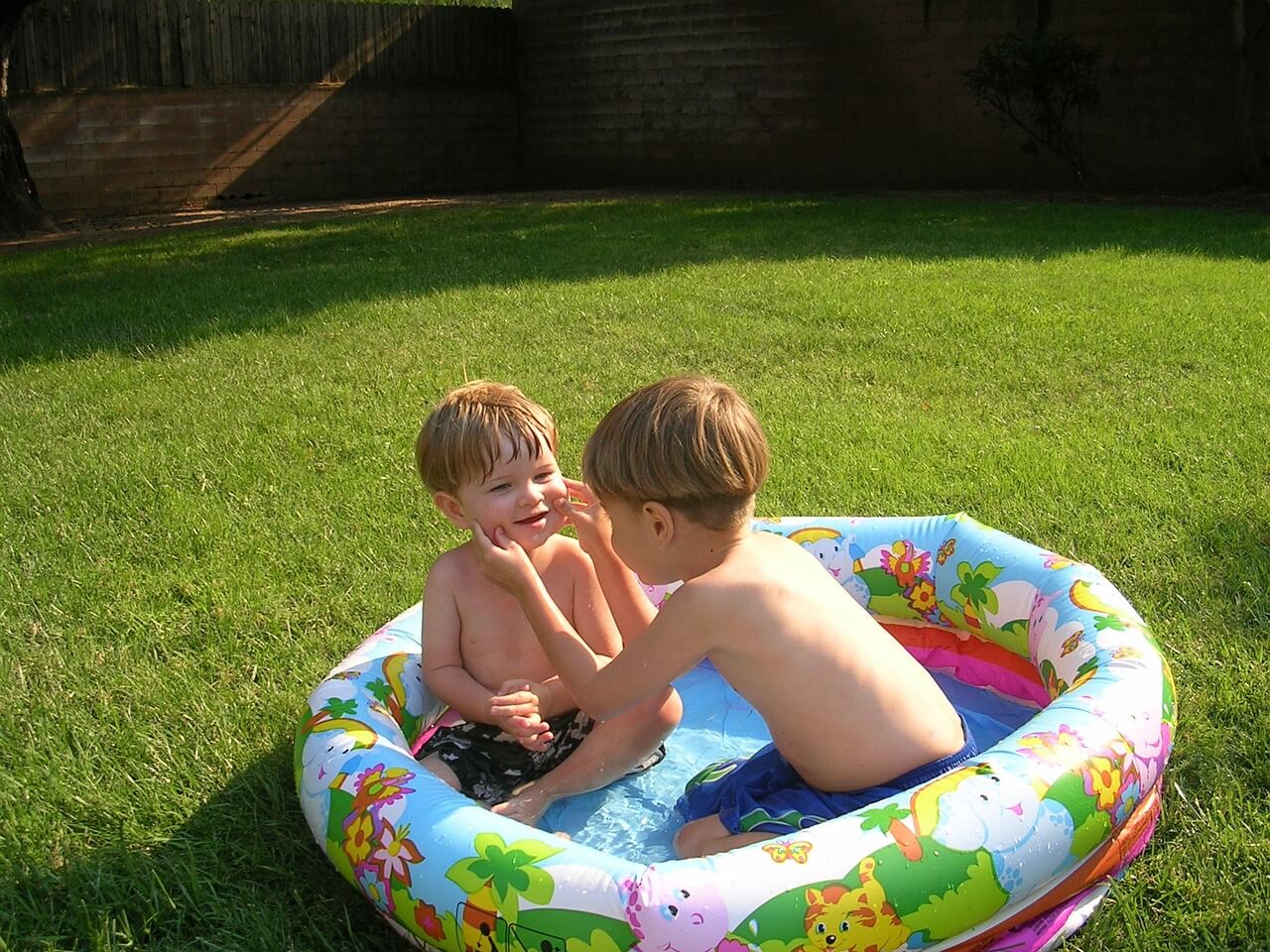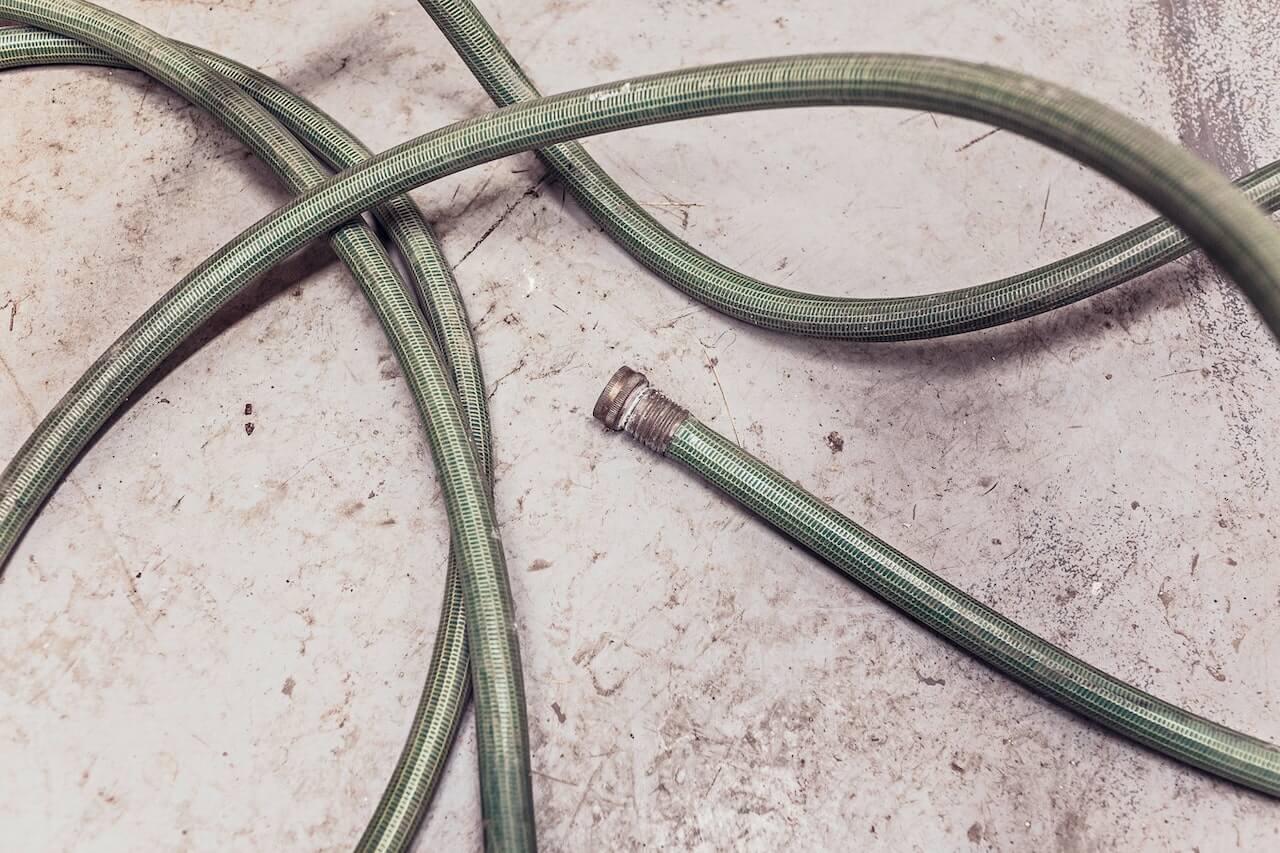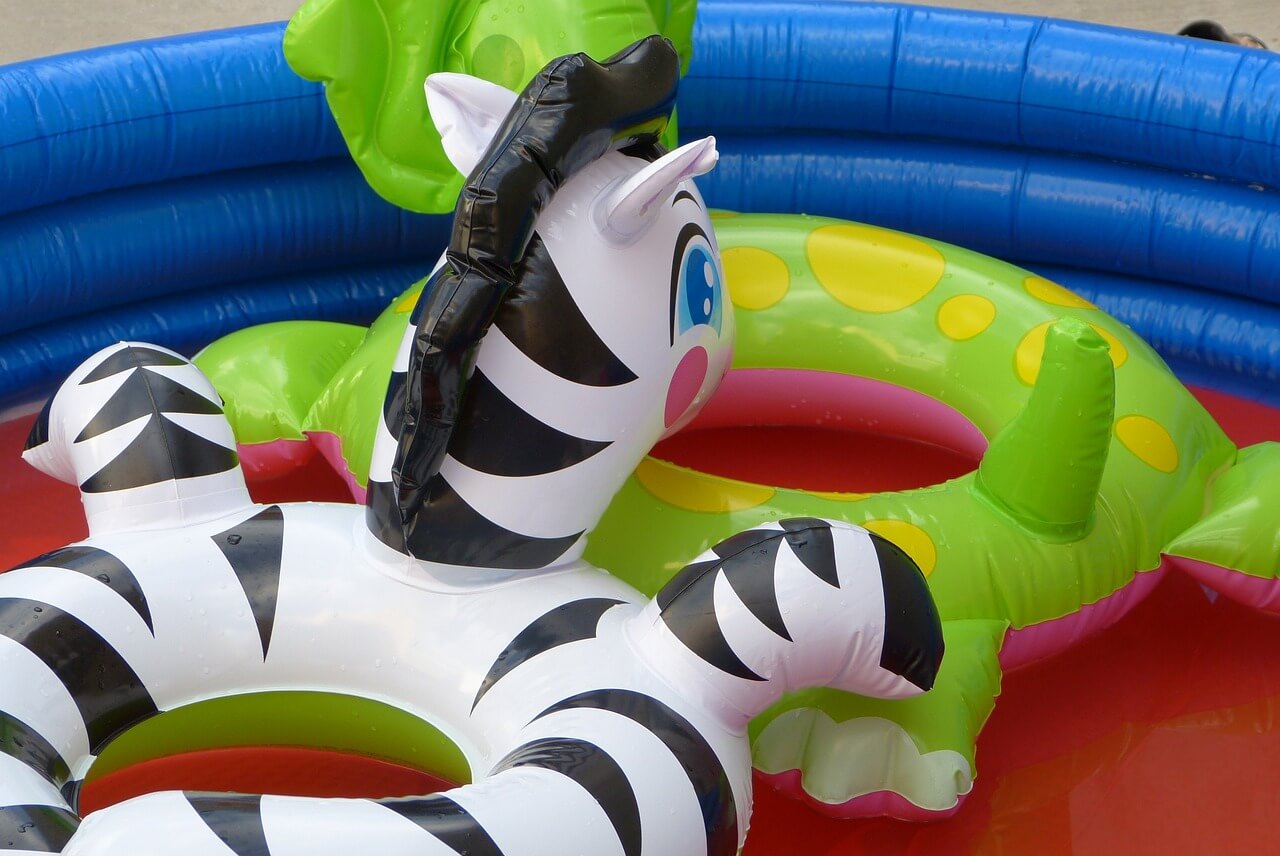When it comes to keeping your kiddie pool clean throughout the summer months, there are plenty of measures you can take to ensure that the water stays fresh and free from harmful bacteria.
To begin with, establish a routine for cleaning and maintenance. This includes skimming the surface of the water daily to remove debris, using a small pool vacuum once or twice a week to enhance water quality, as well as completely draining and refilling the pool, and cleaning the surfaces with soapy water or bleach.
A well-maintained pool not only provides a safe environment for children to splash around in, but also saves you time and effort in the long run. By following these steps and taking a proactive approach, you will be able to enjoy a clean and safe kiddie pool all summer long.
Why You Need to Clean the Kiddie Pool

When it comes to maintaining a kiddie pool, cleanliness is crucial for various reasons. First and foremost, keeping the pool clean helps to minimize the risk of illness for your children.
Dirty water can become a breeding ground for harmful bacteria, viruses, and algae. These pathogens can cause severe health problems, such as ear infections, respiratory issues, and skin irritation, in your little ones.
Proper pool hygiene also prolongs the lifespan of the pool itself. Dirt, debris, and contaminants can cause the pool materials to deteriorate over time, leading to leaks and damage.
Regular cleaning and maintenance can effectively extend your kiddie pool’s usability and ensure it remains a fun place for your children to play during the hot summer months.
Additionally, maintaining a clean kiddie pool enhances the overall aesthetic of your outdoor space. A dirty, green pool can quickly become an eyesore and a source of embarrassment when guests visit your home.
By cleaning and maintaining your pool, you can present an inviting and well-kept backyard environment for both family and friends to enjoy.
Gathering Cleaning Supplies

Before you begin, it’s essential to gather the right cleaning supplies for your kiddie pool. Having these items at hand will make the process smoother and more efficient.
First, you’ll need a pool skimmer to remove debris from the water’s surface. Choose one with a fine mesh net that can capture smaller particles, such as leaves, insects, and dirt.
Next, consider investing in an oil-absorbing sponge, such as the Scumbag oil sponge. This handy tool can absorb up to 40 times its weight in sunscreen oils and other contaminants, keeping the water free from unwanted residues.
For sanitizing your kiddie pool, you’ll need a reliable sanitizing agent. Bleach or special small chlorine tabs that are designed for use in spa tubs and small pools can be used.
Follow the product’s instructions regarding the amount and frequency of application to maintain proper sanitation levels.
Lastly, don’t forget to purchase a pool cover that fits your kiddie pool. Covering the pool when not in use keeps debris out of the water, making your cleaning efforts much more manageable.
Now that you’ve gathered the necessary supplies, you’re well-prepared to keep your kiddie pool clean and enjoyable throughout the summer.
Ways You Can Clean the Kiddie Pool
There are various ways you can keep your kiddie pool clean, so you should choose the method(s) that are most applicable to your situation.
1. Draining and Refilling the Pool
Draining and refilling your kiddie pool is an effective method for maintaining cleanliness. For smaller kiddie pools, you can simply drain and refill it everyday; no need for disinfecting the water.
Before starting, make sure you have a suitable location for draining the water, such as a garden or an area that won’t be damaged by the sudden influx of water.
First, if your kiddie pool has a drain plug, remove it and let the water flow out. Optionally, you can connect a garden hose to control the direction of the water and prevent lawn erosion or over-saturation.
If your pool doesn’t have a drain plug or you need to empty it more quickly, consider using the siphon method with a garden hose.
Once the pool is empty, it’s time to clean it:
- Use a soft-bristle brush and mild dish soap to scrub the pool’s surfaces gently.
- Rinse the pool thoroughly with a hose, ensuring all the soap is washed away.
- Allow the pool to air-dry completely before refilling it with fresh water.
Draining your kiddie pool regularly not only helps keep the water sanitary but also allows you to inspect its surfaces for damage or wear. Regular cleaning ensures a safe and enjoyable swimming experience for you and your little ones.
2. Removing Dirt and Debris
Keeping your kiddie pool free from dirt and debris is essential for maintaining a healthy and enjoyable swim environment. To keep the pool clean, follow these simple steps to remove various types of debris:
Firstly, use a handheld net or pool skimmer to scoop up any floating debris, such as leaves, bugs, and dirt. Since kiddie pools don’t have built-in skimmers like larger pools, you’ll need to skim the surface yourself regularly.
Besides regular cleaning, taking preventive measures can also help reduce the amount of debris entering your pool.
Buy a pool cover for your kiddie pool and put it on when the pool is not in use. You can also place a weed control membrane underneath the pool to minimize the chances of debris being blown into the water.
3. Soaking Up Sunscreen and Bodily Oils
It’s natural for sunscreen and bodily oils to make their way into your kiddie pool. Luckily, there are several effective ways to soak up and combat these oily residues to keep the water fresh and clean.
A brilliant solution to this issue is the use of oil-sucking sponges. These lightweight sponges are specifically designed to absorb oils floating on the water’s surface.
Place one of these sponges in your kiddie pool, and you’ll notice it absorbing oils like a champ. As it does its job, wring out the absorbed oils and reuse the sponge multiple times. The Scumbug oil-sucking sponge is a popular option that can absorb up to 40 times its weight in sunscreen oils.
Another tactic to keep the kiddie pool clean is to:
- Encourage swimmers to shower before entering the pool. This can help rinse off excess oils, dirt, and sunscreen before they enter the water.
- Regularly change the pool water. Even with clean swimmers and oil-absorbing techniques, replacing the water every few days will help maintain a clean environment.
4. Cleaning with Soap and Water
When cleaning your kiddie pool, soap and water can be a simple yet effective solution.
Start by emptying the pool of any remaining water at the end of each swim session. This step helps to remove unwanted contaminants that may have settled at the bottom of the pool.
Next, you’ll want to prepare a cleaning solution. Fill a bucket with water, then add a few drops of natural soap or mild dish soap. Make sure to properly mix the solution to ensure that the soap is evenly distributed.
Armed with your cleaning solution, grab a sponge or bristle cleaning brush and dip it into the water-soap mixture.
Now, gently scrub the kiddie pool surfaces, focusing on any visible film or grime that has formed. Be thorough, but avoid using excessive force as it might harm the pool material. If there were any pool floats in the pool, you need to scrub them down too.
Once you’ve finished scrubbing, let the soap sit for a few minutes to work on any stubborn dirt.
Finally, rinse off the soap with clean water, ensuring that no residue remains in the pool.
After cleaning the pool’s surface, it’s crucial to let it air-dry. Proper drying prevents the growth of mold and mildew, which can be harmful to your child’s health.
Place the pool in a sunny spot with good airflow to speed up the drying process. You can also use a clean towel or absorbent cloth to help remove excess moisture from the pool’s surface.
While waiting for the pool to dry, it’s a good idea to inspect it for any damages. Check for punctures, leaks, or worn areas that might need repair. This is essential for maintaining the pool’s longevity and ensuring the safety of those who use it.
Afterwards, if you really want to ensure the kiddie pool is clean, you can go a step further. Dry surfaces can be disinfected using a bleach solution, as recommended by the CDC. Dilute household bleach in room-temperature water and apply the solution to all surfaces.
Maintaining Pool Cleanliness
Using Pool Covers
Investing in a quality pool cover is a smart choice for maintaining the cleanliness of your kiddie pool. By covering the pool when it’s not in use, you can effectively keep out dirt, leaves, insects, and other debris.
This not only makes your pool more pleasant for the kids to splash about in, but it also eases the workload of your cleaning regimen. Select a cover that is designed for your specific pool size and secure it properly when not in use, according to the manufacturer’s instructions.
Having a Regular Maintenance Schedule
Establishing a regular maintenance schedule is crucial for keeping a kiddie pool clean throughout the summer.
- Skimming: Daily skimming with a handheld net is vital for removing floating debris like bugs, leaves, and dirt
- Vacuuming: Invest in a small pool vacuum and use it once or twice a week for more thorough cleaning, especially at the bottom of the pool
- Cleaning: Get your hands dirty and scrub the surface of the pool to get rid of any dirt or debris that is stuck on the surface. Disinfect the surface using bleach mixed with warm water.
Enforcing a rule that your kids must shower before entering the pool and placing an oil-absorbing sponge inside can help minimize contaminants introduced by swimmers, such as sweat and sunscreen.
Additionally, be vigilant about keeping sick children out of the pool, as germs causing diarrhea and vomiting can contaminate the water.
Can You Add Pool Chemicals to a Kiddie Pool?
Despite the available disinfectant options, it’s important to note that the CDC advises against adding these products directly to smaller inflatable or plastic kiddie pools. For these types of pools, daily cleaning, emptying, and removing debris should suffice.
Their reasoning is that it’s difficult for you to keep track of:
- The water level as kids keep splashing water out
- How much debris is in the pool as kids keep bringing them in
Kids are rowdy and they will constantly splash water out, making it difficult to determine how much water is left in the pool and therefore how much chlorine is safe to add. It would be a chore to manually keep up with this as I’m sure you have other things to do.
Once again, due to how rowdy kids are, you also don’t know how much debris they will bring into the pool. Since kiddie pools don’t have a skimmer or filter, the debris will linger in the pool and rapidly use up any chlorine you may have added into the pool.
For these reasons, the CDC recommends you just drain, clean, and refill the kiddie pool because it’s too difficult to track how much chlorine you should put into it.
Conclusion
Now that you’ve learned various methods to maintain and clean your kiddie pool, it’s time to put those techniques into practice. Remember, consistency is key.
Regularly skim the pool and vacuum it to remove debris, and don’t hesitate to use a bleach solution for sanitizing dry surfaces when needed.
By taking simple preventative measures, such as using a pool cover and educating your children about proper pool etiquette, you’ll help keep the pool in tip-top shape all summer long.
You now have the tools and know-how to provide a clean and enjoyable kiddie pool experience for your family. Happy swimming!
Sources:
- https://www.cdc.gov/healthywater/swimming/swimmers/inflatable-plastic-pools.html
- https://www.homelifeleisure.com/how-to-keep-kiddie-pool-clean-naturally/
- http://www.backyardkid.com/home/2018/5/7/how-to-keep-the-kiddie-pool-water-clean-all-summer-long
- https://ownthepool.com/how-to-keep-a-kiddie-pool-clean/
- https://blog.intheswim.com/how-to-maintain-an-inflatable-kiddie-pool/
- https://www.funboy.com/blogs/funboy-life/how-to-drain-kiddie-pool
- https://easypoolcleaning.com/how-to-clean-dirt-from-the-bottom-of-a-pool/
- https://www.hunker.com/12516125/natural-ways-to-clean-a-kiddie-pool
- https://www.myperfectpool.com.au/keeping-kiddie-pools-clean.html
Last update on 2024-07-12 / Affiliate links / Images from Amazon Product Advertising API


